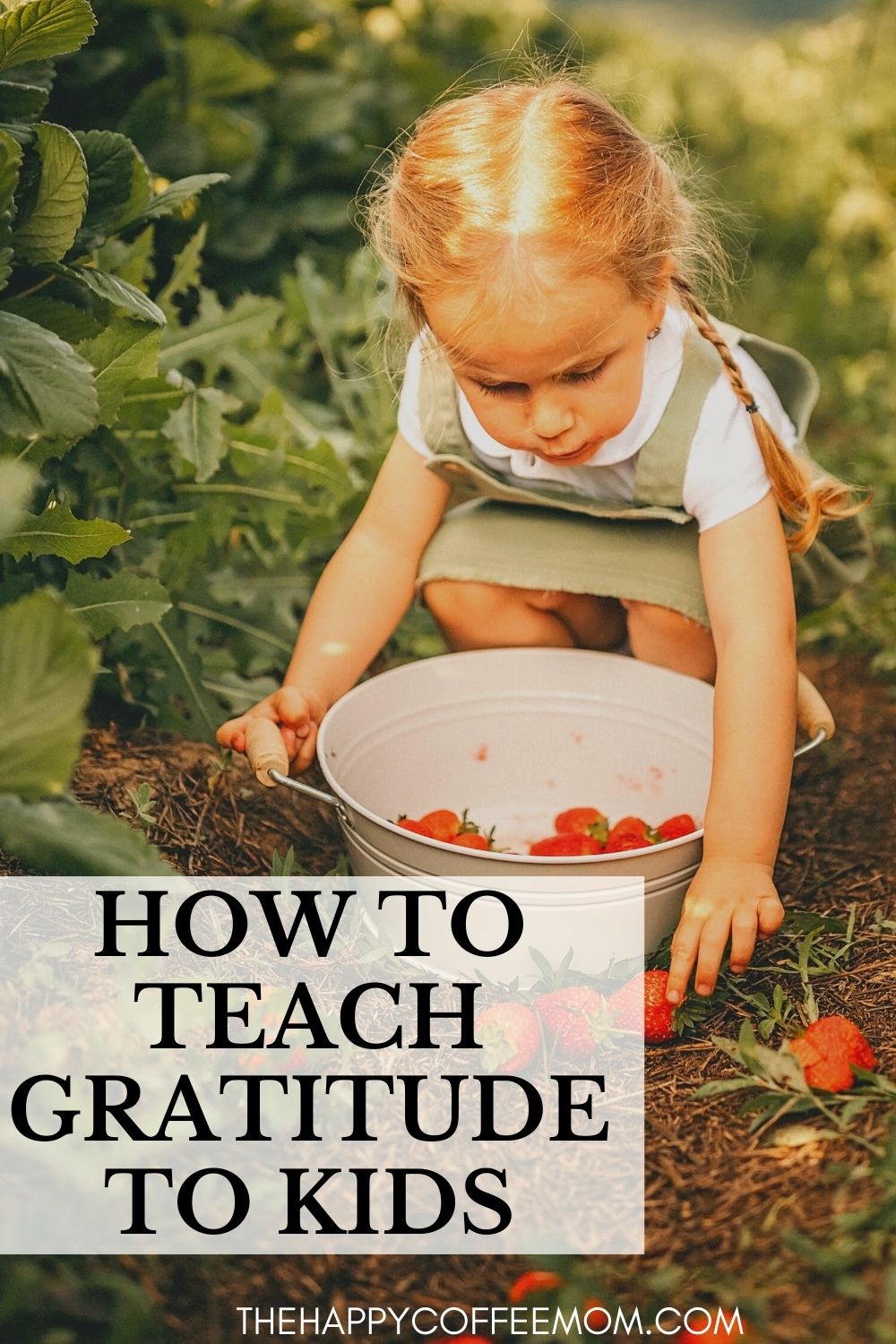Learn how to teach gratitude to kids with these simple ideas.
Gratitude is the feeling of appreciation and gratefulness for things, emotions, and relationships. As adults, we know that having gratitude and being grateful is an important quality to have as a person. Studies show that gratefulness is actually linked to happiness and an overall better well being both physically and mentally.
But, how do we teach this essential characteristic to little ones? Don’t worry, we have you covered! Here’s how to teach gratitude to kids.

Teaching Gratitude to Kids
Lead By Example
Children learn best by seeing and then doing themselves. So, one of the easiest ways to begin teaching children gratefulness is by modeling it.
Simple everyday things like minding your manners, performing small acts of kindness, and even voicing your appreciation for someone or something can go a long way.
By showing children what you’re grateful for and then expressing that gratitude, they will be able to recognize the feeling of thankfulness and then know what to do with those feelings.
Mind Your Manners
Minding your manners is a great way to familiarize kids with the concept of gratitude. Introducing phrases like please, thank you, and you’re welcome, in your everyday interactions can show children that being polite and courteous to others are simple ways to express compassion.
In addition, actions such as excusing yourself, covering your mouth when you cough or sneeze, and simply holding the door for someone are other wonderful ways to mind your manners.
These small, but important, mindful actions will encourage young ones to be more self-aware and thus create more positive social relationships with others.

Perform Acts of Kindness
Acts of kindness are a wonderful way to help children learn about gratitude. Being kind to others cannot only make someone else feel good but can also make yourself feel good.
Helping a neighbor with their groceries, giving someone a compliment, or simply sharing a smile can promote positivity and gratefulness.
Kindness encourages empathy and compassion and is essential to building on the perception of gratitude. Best of all, being kind is free, so give all the kindness you can!
Ask Questions
The concept of gratitude is said to have four components: notice, think, feel, and do. By asking questions relating to these separate parts of gratitude, children will be encouraged to dig deeper into the idea of gratitude and what being grateful actually means.
Here are a few questions to get you started…
- Did you notice that something nice happened to you today? Did you notice something you should be grateful for?
- Why do you think this act of kindness happened? Why do you think this is something to be grateful for?
- How does this nice interaction make you feel? Do you feel happy, excited, proud?
- Are you going to reciprocate or copy the kindness you’ve been shown today? What are some ways to show you’re grateful?

Establish Gratitude Rituals
Learning to recognize and express gratitude can be encouraged through daily gratitude rituals. Keeping a gratitude list in the morning is a great way to begin the day on a positive note. You might also start the morning off by making a plan to perform at least one random act of kindness for the day.
After school, share something great that happened to you or to someone else. Before bed, jot down or say three things that you are grateful for on your gratitude list.
The Importance of Teaching Children About Gratitude
Instilling gratitude in children will help them to become compassionate, helpful, and happy adults. Recognizing what you have to be grateful for, exploring your feelings about gratefulness, and finding ways to express that appreciation are all important factors for learning about gratitude.
Simple actions such as minding your manners, being kind to others, and sharing your thoughts and feelings are all wonderful ways to encourage children to practice gratitude and be grateful.



